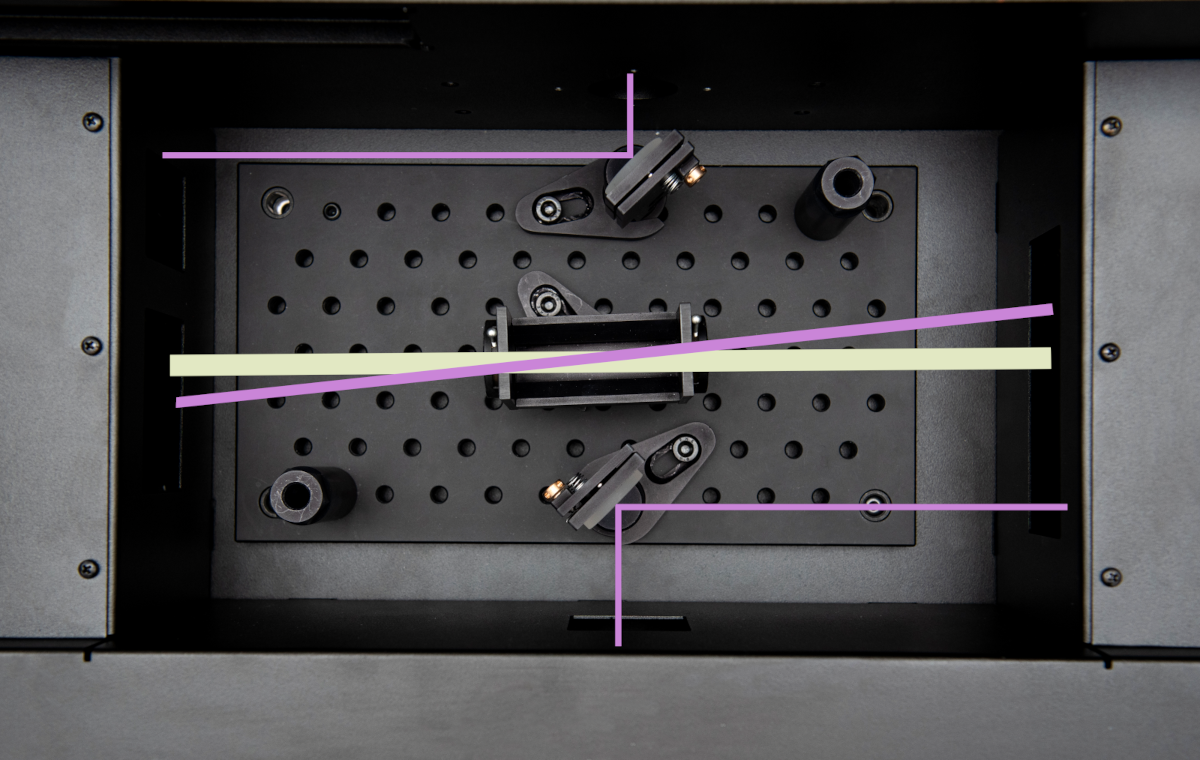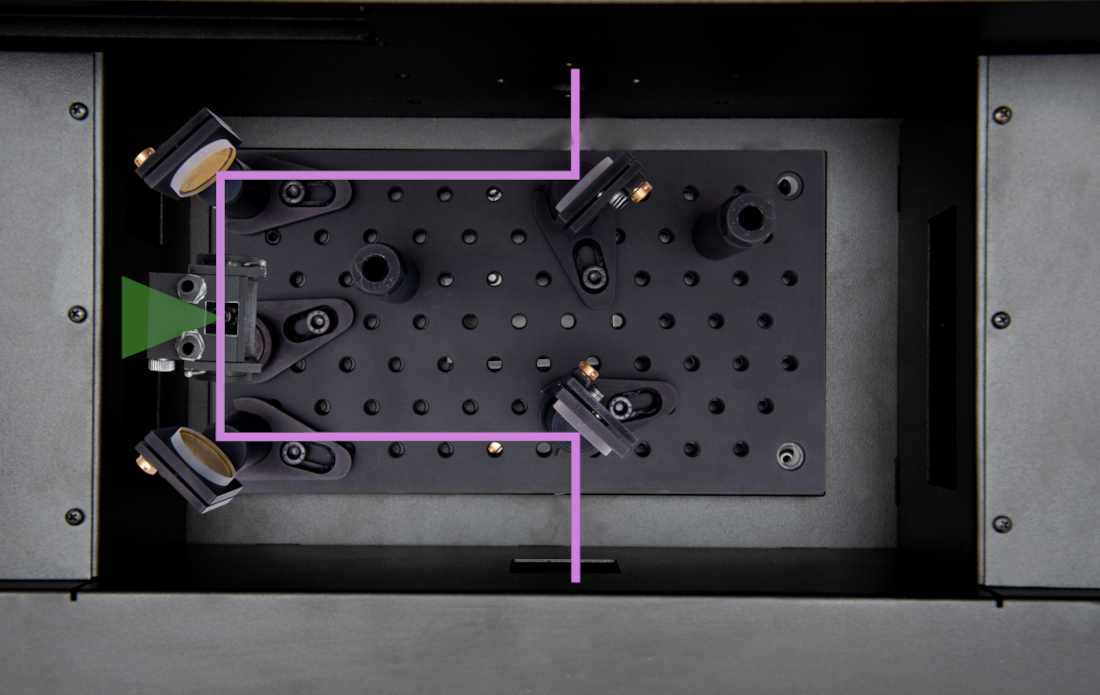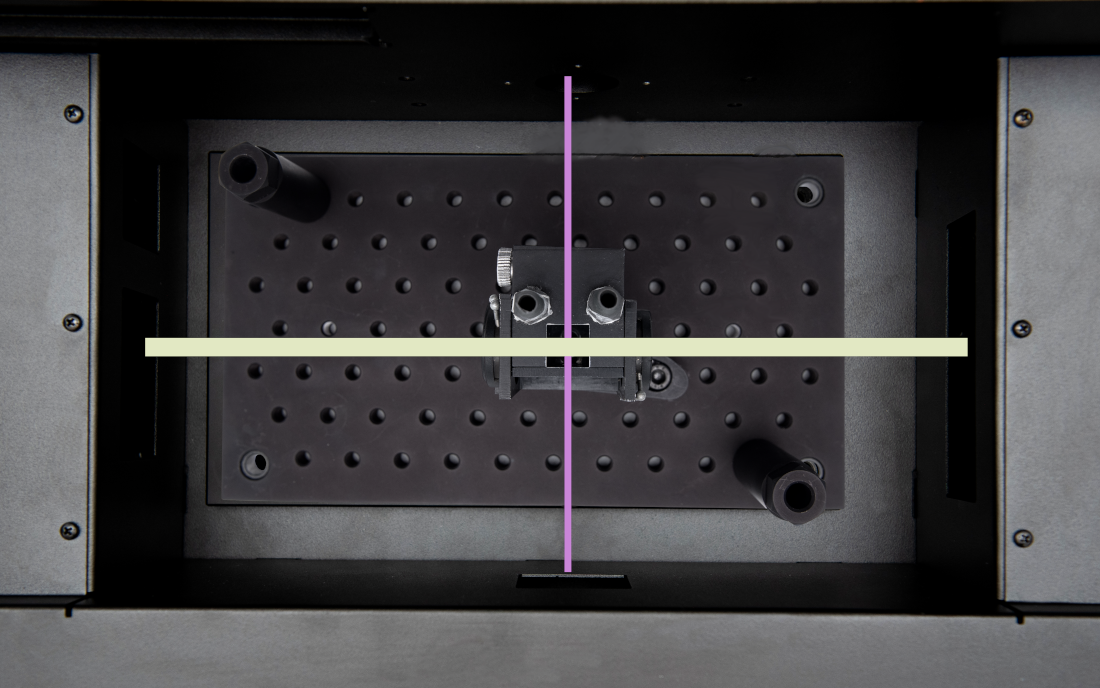Transient Absorption Spectroscopy to examine short lived photo-excited transients
Couldn't load pickup availability
Delivery and Shipping to EU
Delivery and Shipping to EU
We will add in the quotation, the shipping, insurance, customs clearance costs.
Transient Absorption Spectroscopy to examine short lived photo-excited transients
Instytut Fotonowy
Description
Transient Absorption Spectrometer, also called Flash Photolysis Spectrometer is dedicated to measure transitions between quantum states in photo-excited sample. TA measurements are applicable to liquid and solid sample types.
The sample in the ground state is energized to an excited state with an intense laser pulse. The pulse may induce short lived intermediates such as electrons at higher energy levels, radicals or ions.
Process of deexcitation is monitored by measurement of the Transmittance/Absorbance of the white light beam going through the sample in case of a liquids and thin films or Reflectance of the sample in case of powders and non transparent bulk samples. The white light beam is produced by the Xenon Lamp.
Solid state samples may be submerged in electrolyte and the potential may be set to a given value during the experiment.
System provides functionality that enables measurements of fluorescence and phosphorescence induced with the laser pulse.
Experimental procedures are fully automated.
Quantities measured by the instrument:
Transmittance/Absorbance or Reflectance of the sample in nanosecond time scale,
Laser-induced fluorescence spectrum,
Life time of the photo-excited transients,
Laser beam intensity on the input and the output of the sample chamber,
I-V characteristics of the electrochemical samples.

Spectrometer modules
Closed sample chamber.
Xenon Lamp with water cooling system and the Pulser.
Laser, typically Nd:YAG with possibility of choosing higher harmonics or even OPO.
Monochromator for UV, VIS and IR spectrum range.
Osciloscope.
Photomultiplier.
Timer synchronizing all the components of the system.
Potentiostat providing full characteristics of the electro-chemical sample.
Electro-chemical cuvette with platinum electrode and Ag/AgCl reference.

Sample chamber
Sample chamber screens the measurement setup from background diffused light and external electromagnetic fields. It is equipped with a safety system that disconnects power supply of the Xenon Lamp and laser source after opening the chamber and system of easy and stable installation of several different experimental setups.
Inner measurement setups with different optical paths and sample cuvettes may be provided and adjusted to the individual experimental requirements.

Specifications
Instrument performance may be tailored to the certain requirements..
Sample chamber
Safety system that disconnects the power supply of the Xenon Lamp and the Laser when the chamber is opened,
Easy and stable installation of several different experimental setups with sample cuvettes,
Two photodiodes: at the chamber entrance and output to measure laser pulse power,
Xenon Lamp
150 W xenon burner,
Water cooling system,
Low EM emission igniter,
Light intensity stabilization mode that provides constant light power of the beam,
Default beam diameter: 8 mm,
Coupled with a Filter Wheel to modify the probing spectrum,
Xenon Lamp Pulser
Pulse duration: 2 µs ÷ 2 ms,
Pulse current: 8.5 ÷ 595 A.
Laser source
Quantel Q-Smart
Laser type: Nd:YAG with 1064 nm base line,
Up to four Harmonic Generation Modules: 213 nm, 266 nm, 355 nm, 532 nm,
Beam diameter: 5 mm,
Pulse duration: 5 ns,
Beam power: 532 nm: 200 mJ, 350 nm: 100 mJ (10 Hz),
Any other laser type or OPO may be used at the sample chamber entrance.
Filter Wheels
Up to 6 filters,
Two edge (long pass) filters provided by default: 400 nm and 600 nm,
Optional Air Mass Filter installed in the Filter Wheel coupled with the Xenon Lamp,
Potentiostat
Standard or Analog,
Standard Potentiostat (for setting bias potential and slow current measurements):
– Bandwidth:500 Hz,
– Sampling: 1 kHz,
– Current resolution: from 1 pA to 100 nA (range dependent),
Analog Potentiostat (for fast photocurrent measurement and fixed bias potentials):
– Bandwidth:500 Hz,
– Bias current compensation,
– Measurement ranges: 10 mA/V; 1 mA/V; 100 μA/V; 10 μA/V; 1 μA/V; 100 μA/V,
Bias potential range: -5 V ÷ 5 V,
Two- or three-electrodes configuration,
Photomultiplier
R928P Hammamatsu
Anode to Cathode voltage range: 500 ÷ 1200 V,
Spectral range: 160 ÷ 900 nm,
Timer
Time resulution: 50 us,
Trigger frequency: adjustable to match the laser pulse rate, via software,
Controls the experiment timing and synchronization of: Laser pulse, oscilloscope, input and output shutters, Potentiostat,
Operated via software,
Two input channels to measure laser pulse power,
Oscilloscope
PicoScope 6403E
Bandwidth: 300 MHz,
Sampling rate: 5GSample/s,















